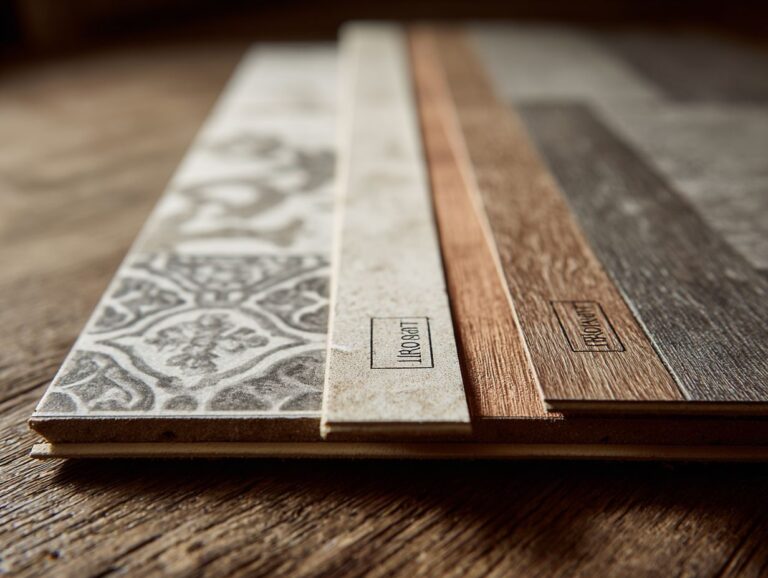Flooring Fire Ratings – Class A, B, C Explained
Contents
- Introduction to Flooring Fire Ratings
- Understanding Fire Ratings
- Class A Fire Ratings
- Class B Fire Ratings
- Class C Fire Ratings
- Comparative Analysis of Class A, B, and C
- Fire Ratings Data for Flooring Systems
- Frequently Asked Questions
- What are flooring fire ratings and why are they important?
- What is the difference between Class A, B, and C flooring fire ratings?
- How are flooring materials tested for fire ratings?
- What types of flooring materials typically have Class A fire ratings?
- Do flooring fire ratings only apply to commercial buildings?
- Are there any other factors to consider besides fire ratings when choosing flooring?
Introduction to Flooring Fire Ratings
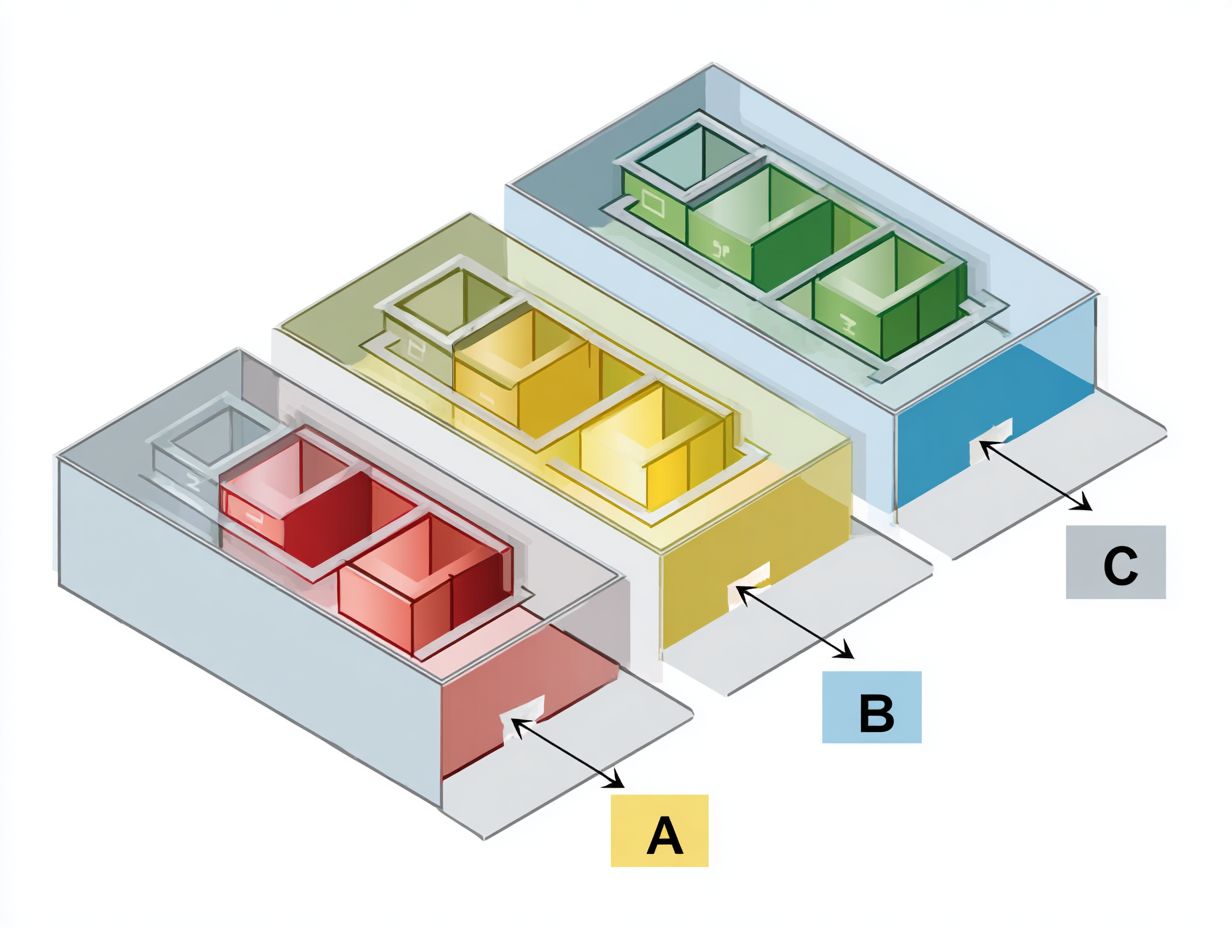 Knowing the fire ratings of flooring is important for choosing the correct building materials for fire safety. According to the EN 13501-1 classification standard, flooring materials are rated from Class A to C based on their reaction-to-fire characteristics, which are integral to compliance with the Construction Products Regulation and CE marking. This article breaks down these ratings, helping you make informed choices for safer environments.
Knowing the fire ratings of flooring is important for choosing the correct building materials for fire safety. According to the EN 13501-1 classification standard, flooring materials are rated from Class A to C based on their reaction-to-fire characteristics, which are integral to compliance with the Construction Products Regulation and CE marking. This article breaks down these ratings, helping you make informed choices for safer environments.
Key Takeaways:
Importance of Fire Ratings in Flooring
Fire ratings serve as a benchmark for assessing the fire safety of flooring materials, influencing building design and compliance with the Construction Products Regulation.
It’s important to know fire ratings because they determine which materials can be used in specific areas, especially in commercial buildings.
For example, materials classified under the EN 13501-1 standard demonstrate varying levels of fire resistance, with Class A1 being non-combustible and Class B indicating limited combustibility.
Not following these rules can result in serious consequences, such as fines or project delays. Using materials with inadequate fire resistance can jeopardize occupant safety and increase insurance costs.
Always check the fire rating of the flooring to meet safety codes and rules.
Overview of Class A, B, and C Ratings
Floors are classified into three categories: Class A, B, and C, based on their reaction-to-fire characteristics as defined by EN 13501-1.
Class A floors have the highest resistance to fire, featuring non-combustible materials that limit the spread of flames and smoke. Examples include reinforced concrete and certain types of ceramic tiles.
Class B floors, while still resistant, can support a certain degree of flame spread, often utilizing treated wood or mineral-based products.
Class C floors have the highest danger because they use materials like untreated wood or vinyl that catch fire easily. Knowing these classifications helps make informed decisions for safety rules in construction projects.
Understanding Fire Ratings
Fire ratings are important because they show how materials behave in a fire, using tests like ASTM E84.
What is a Fire Rating?
A fire rating indicates the level of fire resistance a material can provide, assessed through standardized tests that measure performance criteria such as ignitability and flame spread.
Fire ratings are divided into groups such as Class A, B, and C, and are important for meeting building codes and increasing safety.
For instance, Class A materials, including concrete and brick, provide excellent fire resistance, which is why they are used in tall buildings. In contrast, Class C materials, like untreated wood, are more flammable and should be limited to applications where fire risks are lower.
When selecting materials, reviewing local regulations ensures compliance with safety standards and allows designers to make informed choices.
How Fire Ratings are Determined
Fire ratings are set through strict testing procedures required by standards such as NFPA 253 and EN 13501-1, which concentrate on different performance measures.
These rules check materials for things like how fire spreads, how much smoke they create, and how much heat they give off. Regulatory agencies, such as local building code authorities and fire safety groups, examine test results to correctly categorize materials.
For example, a material rated Class A will demonstrate the best fire resistance, suitable for high-risk areas like commercial buildings. Architects and builders should review these ratings when choosing materials and planning projects to follow regulations and increase safety, making sure people and property are protected.
Testing Methods for Fire Ratings
Common testing methods for determining fire ratings include ASTM E84, which evaluates flame spread, and ASTM E648, which assesses critical radiant flux.
Other methods include ASTM E119, which tests fire resistance by evaluating elements in a controlled setting for a specified duration. This test simulates fire exposure to determine how long a material can withstand flames before failure.
The results are important for safety checks, especially in commercial buildings where the number of people and material selection can affect fire safety. These tests help designers and builders select flooring materials that comply with local fire regulations and improve safety for people inside.
Class A Fire Ratings
Class A fire ratings indicate the strongest protection against fires, providing essential safety for tall buildings and public spaces.
Definition and Characteristics
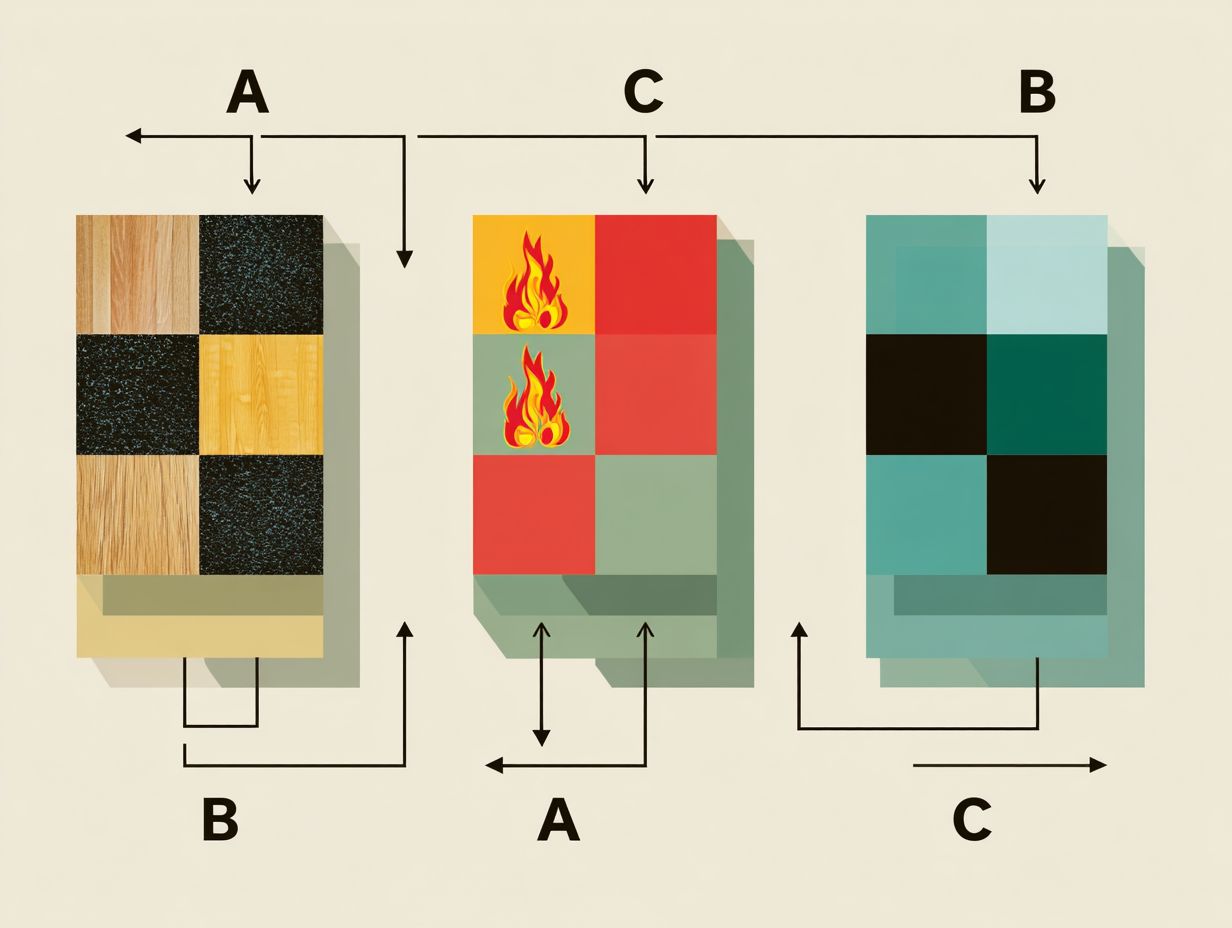
Class A materials have a flame spread index of 0-25, indicating minimal flame spread and superior fire performance characteristics.
These materials are typically used in structures requiring high fire resistance, such as commercial buildings and schools. Examples include reinforced concrete, certain types of brick, and gypsum board.
Class A materials have a lower flame spread index compared to Class B materials, which have a flame spread index of 26-75. Class B materials let fire spread more easily, making them less suitable for places with high fire risk.
Class B materials, like untreated wood and some types of masonry, can still be used in lower-risk applications where fire safety codes allow for it.
Always consult your local building code for specific requirements.
Materials Typically Rated Class A
Common materials that achieve Class A ratings include mineral fiber tiles, concrete, and certain treated wood products that meet stringent testing criteria.
Mineral fiber tiles, often used in commercial interiors, offer excellent sound absorption while being fire-resistant.
Concrete, widely used in homes and businesses, is not just strong but can be strengthened to improve its resistance to fire.
Treated wood products, like fire-retardant plywood, are commonly employed in construction projects requiring aesthetic appeal alongside safety.
Selecting the right material depends on the specific application-whether it’s for ceilings, structural elements, or decorative finishes.
Always check local building rules to confirm safety and legality.
Applications of Class A Flooring
Class A flooring is essential in applications like hospitals, schools, and high-rise buildings where fire safety is paramount.
These environments require flooring that minimizes smoke and toxins during a fire, ensuring the safety of occupants.
For instance, hospitals use Class A flooring to facilitate efficient evacuation while safeguarding patients who may be incapacitated. High-rise buildings often feature these materials in common areas and stairwells, where rapid egress is critical.
Tools like the ASTM E84 test assess flame spread and smoke development, helping builders select appropriate flooring. By using Class A materials, designers and builders make buildings safer from fires, lowering dangers in areas prone to such risks.
Benefits of Class A Flooring
The main advantages of Class A flooring are better safety standards, lower risk of fire, and possible reductions in insurance costs.
Class A flooring is very important in construction because it meets strict fire safety standards, which directly affects safety regulations.
For example, using materials like gypsum-based products or treated wood can significantly diminish the spread of flames, ensuring a safer environment.
Using Class A flooring for risk management can reduce insurance costs, as insurers frequently offer discounts for buildings with improved fire safety features.
This method keeps workers safe and prevents property damage, making the construction site safer overall.
Class B Fire Ratings
Class B fire ratings indicate a moderate level of fire resistance, which is suitable for many business and residential environments.
Definition and Characteristics
Class B flooring materials have a flame spread index of 26-75, representing a moderate level of fire resistance.
These materials are constructed from substances like wood, gypsum, or certain composites, which can manage fire reasonably well. For example, using Class B materials such as treated wood or specific vinyl can effectively contain fire spread in residential and commercial settings.
When choosing flooring, think about using engineered wood with fire-resistant treatment or gypsum-based tiles. These materials meet safety rules and look good.
Always check local building rules to follow fire safety standards and pick the best materials.
Materials Typically Rated Class B
Materials such as treated plywood, certain vinyl flooring, and some composites can attain Class B ratings under specific conditions.
For example, treated plywood, especially when covered with fire-resistant chemicals, can earn a Class B rating, which makes it okay for indoor uses such as furniture or cabinets.
Vinyl flooring, especially those with mineral-based components, meets Class B standards and is commonly used in commercial settings due to its durability and flame resistance.
Certain composites, like those made with fiberglass resins, can also secure this rating, offering versatility in both residential and industrial structures.
Choose materials that have been approved by well-known testing labs to meet standards.
Applications of Class B Flooring
Class B flooring is often found in places such as commercial kitchens and office buildings, where fire safety is important, though not as critical as in Class A environments.
This flooring can resist fire, making it suitable for busy areas without highly flammable objects.
For instance, in commercial kitchens, Class B flooring can withstand spills and heat, while providing enough slip resistance.
Tools like the ASTM E648 test can help assess the flame spread index of different materials, ensuring compliance with safety regulations.
Many office buildings opt for Class B options like vinyl or carpet tiles, striking a balance between safety, aesthetic appeal, and cost-effectiveness.
Benefits and Limitations of Class B Flooring
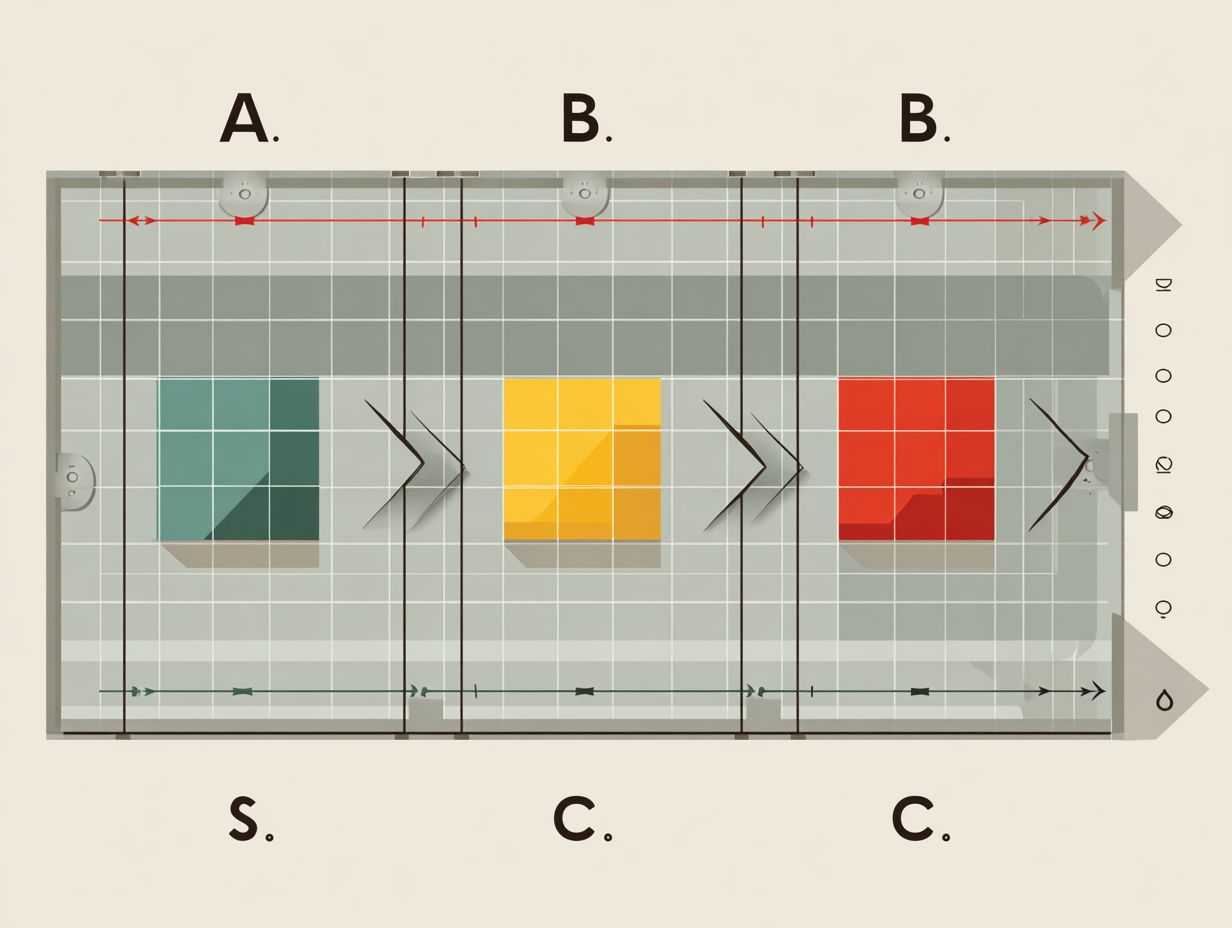
While Class B flooring offers a suitable balance between cost and safety, it may not meet the stringent requirements of high-risk environments.
For instance, Class B flooring usually costs $2 to $4 per square foot, offering an economical choice for office areas. It may not withstand the chemical spills and heavy machinery impact found in warehouses or laboratories.
In contrast, Class A flooring, although more expensive at $5 to $10 per square foot, provides superior fire resistance and durability, justifying its use in high-stakes settings.
Therefore, consider the specific needs of your environment when choosing the flooring type, balancing initial costs against long-term safety and compliance.
Class C Fire Ratings
Class C fire ratings show minimal fire protection, suitable for places with low fire risk.
Definition and Characteristics
Class C materials have a flame spread index of 76-200, indicating a higher potential for flame spread and smoke production than Class A or B.
These materials are commonly found in less regulated environments, such as temporary structures or certain outdoor applications. Examples include some types of plywood, untreated wood, and certain insulations.
When using Class C materials, make sure to have fire safety precautions in place, such as installing smoke alarms and clearly marking fire exits.
For projects involving Class C materials, consider using fire retardant treatments, which can improve safety without significantly increasing costs, thereby reducing overall risks associated with flame spread.
Materials Typically Rated Class C
Common Class C materials include untreated wood and certain types of drywall that do not meet higher rating criteria.
These materials are often used in applications like non-load-bearing partitions or temporary structures.
For instance, untreated wood, commonly pine, is frequently found in framing for agricultural buildings, where moisture exposure is controlled. Non-fire-rated drywall is suitable for places like storage areas, where fire safety rules are less strict.
For correct use, always verify local building regulations, particularly in buildings with both residential and commercial spaces, as Class C materials might be more closely regulated.
Applications of Class C Flooring
Class C flooring is often found in low-risk areas such as storage rooms or basements, where fire exposure is minimal.
These areas typically house non-combustible materials or items that do not pose a significant fire hazard, allowing the use of materials with lower fire ratings.
For example, in a basement used primarily for storage, using Class C flooring made from materials like concrete or vinyl is sufficient. Facilities often use fire-resistant coatings to improve safety without needing more costly Class A or B flooring.
This method complies with safety rules and reduces renovation expenses greatly.
Benefits and Limitations of Class C Flooring
Class C flooring is affordable but has serious fire safety risks, so it should not be used in areas with many people or important operations.
Class C flooring typically has a higher flame spread rating, which can accelerate fire risk in densely populated areas. For example, places like schools or hospitals should choose better-quality flooring materials to improve safety.
Instead, consider Class A or B options, which balance cost with durability. Brands like Mannington and Armstrong provide a range of approved products that guarantee strong safety and fulfill aesthetic preferences.
Check local building rules before choosing flooring to follow regulations and keep people safe.
Comparative Analysis of Class A, B, and C
A detailed comparison of Class A, B, and C fire ratings shows important information about their fire resistance and cost effects for building projects.
Fire Ratings Data for Flooring Systems
Fire Ratings Data for Flooring Systems
Fire Resistance and Flame Spread Ratings: Flame Spread and Smoke Generation (ASTM E84)
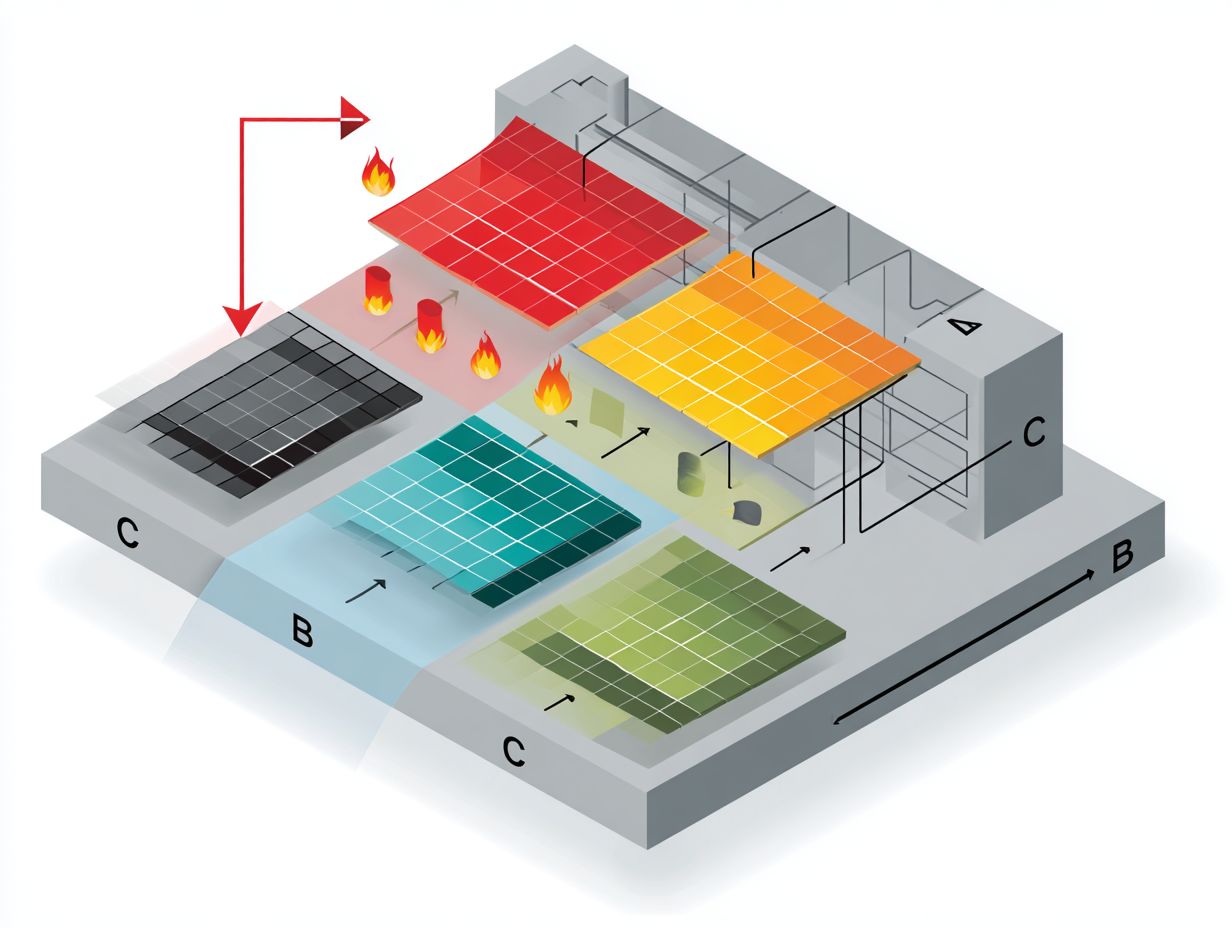
Fire Resistance and Flame Spread Ratings: Flame Spread Class Ratings
The Fire Ratings Data for Flooring Systems provides critical information about flame spread and smoke generation characteristics, essential for assessing safety in building materials. This data helps stakeholders select flooring options that meet fire safety standards, contributing to safer environments in both residential and commercial spaces.
Fire Resistance and Flame Spread Ratings include metrics from ASTM E84, a standard test method for determining surface burning characteristics of building materials. The Flame Spread Class 1 Threshold is set at 25.0, indicating the maximum permissible flame spread index for Class 1/A materials. Materials meeting this threshold are considered highly resistant to flame propagation, suitable for areas requiring stringent fire safety measures.
- Smoke Density Class 1 Threshold: This is established at 450.0, representing the upper limit for acceptable smoke development in Class 1/A materials. Lower smoke density ratings are critical to reducing visibility impairment and inhalation risks during a fire.
Flame Spread Class Ratings categorize materials based on their flame spread index, influencing their suitability for different applications. The Class I/A rating (25.0) reflects superior fire resistance, ideal for high-risk areas like corridors and exits. Class II/B materials, with an index of 75.0, are moderately resistant, suitable for less critical locations. Finally, Class III/C materials, having a flame spread index of 200.0, offer the least resistance and are typically used where fire risk is minimal.
These ratings help architects, builders, and safety engineers choose flooring systems that are practical, look good, and are safe. Following ASTM E84 standards guarantees that construction materials meet national fire safety rules, safeguarding people and buildings.
Fire Resistance and Safety Considerations
Class A materials provide the highest fire resistance, significantly reducing the risk of fire hazards compared to Classes B and C.
These materials, such as concrete and steel, can withstand high temperatures and are typically rated to endure at least one hour of exposure to a direct flame. In contrast, Class B materials, like gypsum board, are effective but less durable, often offering a reduced resistance of around 30 minutes.
Class C materials, including wood and certain plastics, provide minimal protection and are more prone to combustion. Knowing these categories is essential for creating buildings that follow safety regulations and lower fire hazards, especially in places with many people.
Cost Implications of Different Classes
While Class A flooring tends to be more expensive, the long-term savings in terms of insurance and safety compliance can outweigh initial costs.
Class A flooring, typically priced around $6 to $12 per square foot, meets strict fire safety standards, potentially lowering insurance premiums by 10-20%. In contrast, Class B options may cost between $3 and $8 per square foot but might lead to higher insurance costs in the event of a fire due to less stringent regulations.
Using Class C materials might cost less initially, between $1 to $4 per square foot, but may lead to later costs for safety improvements. Investing in Class A improves safety and may provide financial benefits over time (our guide on VOC emissions in flooring explains other health and safety considerations).
Frequently Asked Questions
What are flooring fire ratings and why are they important?
Flooring fire ratings refer to the level of fire resistance a flooring material has. They are important because they can help prevent the spread of fire and protect a building and its occupants in case of a fire emergency.
What is the difference between Class A, B, and C flooring fire ratings?
Class A flooring has the highest level of fire resistance and is able to withstand high heat and flames for a longer period of time compared to Class B and C flooring. Class B flooring has a moderate level of fire resistance, while Class C flooring has the lowest level of fire resistance.
How are flooring materials tested for fire ratings?
Flooring materials are tested for fire ratings by subjecting them to intense heat and flame in a controlled environment. The duration of the test and the ability of the flooring material to resist the fire determines its assigned fire rating.
What types of flooring materials typically have Class A fire ratings?
Typically, non-combustible materials like concrete, tile, and stone have Class A fire ratings. Some hardwood and laminate flooring products may also have Class A fire ratings, but it is important to check with the manufacturer for confirmation.
Do flooring fire ratings only apply to commercial buildings?
No, flooring fire ratings also apply to residential buildings. In fact, it is just as important, if not more, to have fire-resistant flooring in a home as it is in a commercial building.
Are there any other factors to consider besides fire ratings when choosing flooring?
Yes, there are other factors to consider such as the type of building, level of foot traffic, and budget. It is also important to make sure the flooring material meets all necessary safety and building codes in your area.
